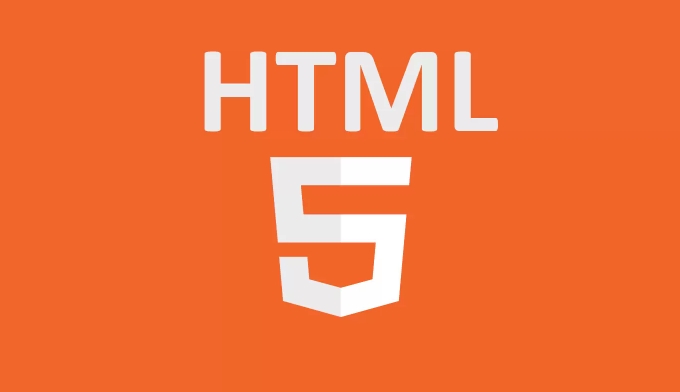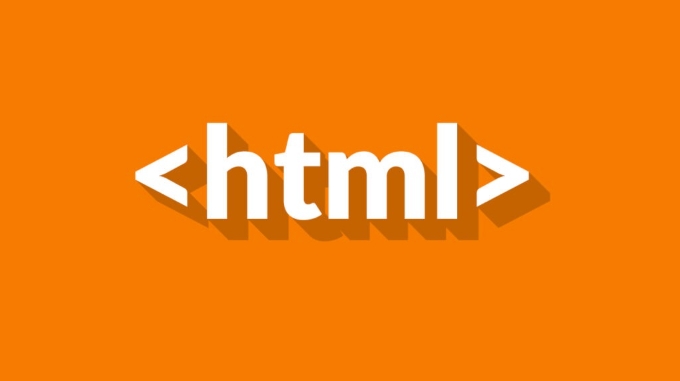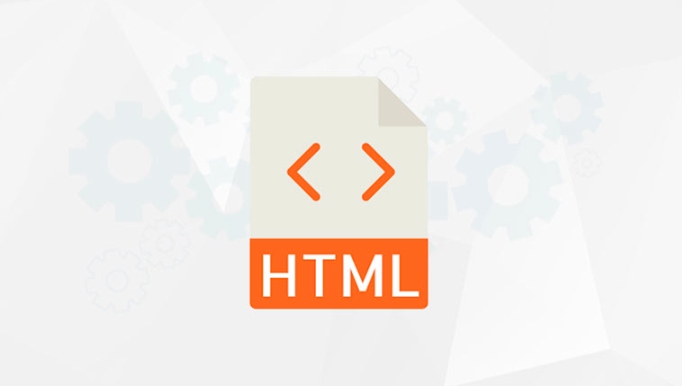Form verification can improve efficiency through HTML5 native mechanism. 1. Use the required attribute to ensure the required fields; 2. Use the input type (such as email, number) and pattern attributes to verify the data format; 3. Use the setCustomValidity() method and CSS to adjust the error prompts and styles to optimize the user experience.

Form verification is an indispensable part of web development, especially when users register, log in or submit information. HTML5 provides some native form verification mechanisms that can reduce dependence on JavaScript and improve user experience and development efficiency. Here are some practical tips to help you better use HTML5 form validation.

Required fields: required attribute
If you want a field to be filled in, you can add required attribute to the corresponding input element. This property tells the browser that the field cannot be empty until the user submits the form.
For example:

<input type="text" name="username" required>
The browser will prompt an error when the user tries to submit a null value. Note that the prompt styles of different browsers may be slightly different, but the functions are consistent. If you want to unify the prompt style, you may need to customize it in combination with JavaScript or CSS.
Data type verification: input type and pattern attributes
HTML5 introduces a variety of input types, such as email , url , number , etc., which will automatically perform basic data format checks.

For example:
<input type="email" name="email">
This will ensure that the user enters a legal email address format. If the standard type cannot meet the needs, you can use pattern attribute and regular expression to define more complex rules:
<input type="text" name="zipcode" pattern="\d{6}" title="Please enter the 6-digit zip code"> Here, you need to enter a 6-digit zip code and give a prompt message through title .
A few points to note:
- Regular expressions do not require slashes
/wraps - Different browsers have slightly different support for pattern, so it is recommended to perform compatibility testing.
- Mobile devices may pop up different keyboards according to input type (such as email keyboard)
Custom error prompts and style adjustments
By default, the browser's error prompts are relatively simple and sometimes do not conform to the product design style. Although the prompt content cannot be completely replaced (because of browser restrictions), the verification logic and error messages can be customized through setCustomValidity() method.
For example:
document.querySelector('form').addEventListener('submit', function(e) {
var password = document.getElementById('password');
if (password.value.length < 6) {
password.setCustomValidity('Password is at least 6 digits');
e.preventDefault();
}
});In addition, you can use CSS to beautify the input box style when verification fails:
input:invalid {
border-color: red;
} However, it should be noted that :invalid pseudo-class will take effect when the page is loaded, which may cause the user to see the red border before entering, affecting the experience. Styles can be applied only after submission through JavaScript.
Basically that's it. Although HTML5 form verification is simple, it can significantly improve user experience and development efficiency if used properly. It is not complicated but easy to ignore that sometimes we rely too much on JavaScript and ignore native capabilities.
The above is the detailed content of HTML5 form validation guide. For more information, please follow other related articles on the PHP Chinese website!

Hot AI Tools

Undress AI Tool
Undress images for free

Undresser.AI Undress
AI-powered app for creating realistic nude photos

AI Clothes Remover
Online AI tool for removing clothes from photos.

Clothoff.io
AI clothes remover

Video Face Swap
Swap faces in any video effortlessly with our completely free AI face swap tool!

Hot Article

Hot Tools

Notepad++7.3.1
Easy-to-use and free code editor

SublimeText3 Chinese version
Chinese version, very easy to use

Zend Studio 13.0.1
Powerful PHP integrated development environment

Dreamweaver CS6
Visual web development tools

SublimeText3 Mac version
God-level code editing software (SublimeText3)

Hot Topics
 Audio and Video: HTML5 VS Youtube Embedding
Jun 19, 2025 am 12:51 AM
Audio and Video: HTML5 VS Youtube Embedding
Jun 19, 2025 am 12:51 AM
HTML5isbetterforcontrolandcustomization,whileYouTubeisbetterforeaseandperformance.1)HTML5allowsfortailoreduserexperiencesbutrequiresmanagingcodecsandcompatibility.2)YouTubeofferssimpleembeddingwithoptimizedperformancebutlimitscontroloverappearanceand
 Adding drag and drop functionality using the HTML5 Drag and Drop API.
Jul 05, 2025 am 02:43 AM
Adding drag and drop functionality using the HTML5 Drag and Drop API.
Jul 05, 2025 am 02:43 AM
The way to add drag and drop functionality to a web page is to use HTML5's DragandDrop API, which is natively supported without additional libraries. The specific steps are as follows: 1. Set the element draggable="true" to enable drag; 2. Listen to dragstart, dragover, drop and dragend events; 3. Set data in dragstart, block default behavior in dragover, and handle logic in drop. In addition, element movement can be achieved through appendChild and file upload can be achieved through e.dataTransfer.files. Note: preventDefault must be called
 What is the purpose of the input type='range'?
Jun 23, 2025 am 12:17 AM
What is the purpose of the input type='range'?
Jun 23, 2025 am 12:17 AM
inputtype="range" is used to create a slider control, allowing the user to select a value from a predefined range. 1. It is mainly suitable for scenes where values ??need to be selected intuitively, such as adjusting volume, brightness or scoring systems; 2. The basic structure includes min, max and step attributes, which set the minimum value, maximum value and step size respectively; 3. This value can be obtained and used in real time through JavaScript to improve the interactive experience; 4. It is recommended to display the current value and pay attention to accessibility and browser compatibility issues when using it.
 How can you animate an SVG with CSS?
Jun 30, 2025 am 02:06 AM
How can you animate an SVG with CSS?
Jun 30, 2025 am 02:06 AM
AnimatingSVGwithCSSispossibleusingkeyframesforbasicanimationsandtransitionsforinteractiveeffects.1.Use@keyframestodefineanimationstagesforpropertieslikescale,opacity,andcolor.2.ApplytheanimationtoSVGelementssuchas,,orviaCSSclasses.3.Forhoverorstate-b
 HTML audio and video: Examples
Jun 19, 2025 am 12:54 AM
HTML audio and video: Examples
Jun 19, 2025 am 12:54 AM
Audio and video elements in HTML can improve the dynamics and user experience of web pages. 1. Embed audio files using elements and realize automatic and loop playback of background music through autoplay and loop properties. 2. Use elements to embed video files, set width and height and controls properties, and provide multiple formats to ensure browser compatibility.
 What is WebRTC and what are its main use cases?
Jun 24, 2025 am 12:47 AM
What is WebRTC and what are its main use cases?
Jun 24, 2025 am 12:47 AM
WebRTC is a free, open source technology that supports real-time communication between browsers and devices. It realizes audio and video capture, encoding and point-to-point transmission through built-in API, without plug-ins. Its working principle includes: 1. The browser captures audio and video input; 2. The data is encoded and transmitted directly to another browser through a security protocol; 3. The signaling server assists in the initial connection but does not participate in media transmission; 4. The connection is established to achieve low-latency direct communication. The main application scenarios are: 1. Video conferencing (such as GoogleMeet, Jitsi); 2. Customer service voice/video chat; 3. Online games and collaborative applications; 4. IoT and real-time monitoring. Its advantages are cross-platform compatibility, no download required, default encryption and low latency, suitable for point-to-point communication
 How to check if a browser can play a specific video format?
Jun 28, 2025 am 02:06 AM
How to check if a browser can play a specific video format?
Jun 28, 2025 am 02:06 AM
To confirm whether the browser can play a specific video format, you can follow the following steps: 1. Check the browser's official documents or CanIuse website to understand the supported formats, such as Chrome supports MP4, WebM, etc., Safari mainly supports MP4; 2. Use HTML5 tag local test to load the video file to see if it can play normally; 3. Upload files with online tools such as VideoJSTechInsights or BrowserStackLive for cross-platform detection. When testing, you need to pay attention to the impact of the encoded version, and you cannot rely solely on the file suffix name to judge compatibility.
 How to create animations on a canvas using requestAnimationFrame()?
Jun 22, 2025 am 12:52 AM
How to create animations on a canvas using requestAnimationFrame()?
Jun 22, 2025 am 12:52 AM
The key to using requestAnimationFrame() to achieve smooth animation on HTMLCanvas is to understand its operating mechanism and cooperate with Canvas' drawing process. 1. requestAnimationFrame() is an API designed for animation by the browser. It can be synchronized with the screen refresh rate, avoid lag or tear, and is more efficient than setTimeout or setInterval; 2. The animation infrastructure includes preparing canvas elements, obtaining context, and defining the main loop function animate(), where the canvas is cleared and the next frame is requested for continuous redrawing; 3. To achieve dynamic effects, state variables, such as the coordinates of small balls, are updated in each frame, thereby forming






